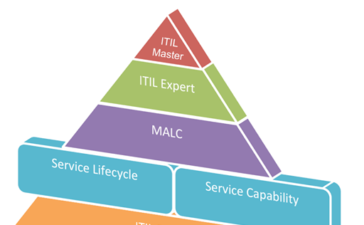The process of manually testing software for defects without any automation use is Manual Testing. Several applications are developing daily, which creates an ocean of opportunities for skilled testers. Whether you have experience or are a fresher in this field, a job interview means numerous questions in your mind and at the time of the interview. This blog will provide a brief list of the top 45 Manual Testing Interview Questions and Answers to help you.

Let’s proceed gradually with the list of manual testing interview questions and answers starting with manual testing interview questions for freshers with answers. And as the theme goes on, freshers becoming experienced experts, we too will dive into the manual testing interview questions for experienced professionals with answers in this article.
Let’s start with manual testing Interview questions for freshers with answers:
1. What is Software Testing, and what are its two main types?
Ans. Software testing is the process of testing applications for bugs, glitches, and errors and checking whether they meet the desired parameters and are fit to be used by the end user. There are two main types of software testing, which are manual testing and automated testing.
2. Explain in short what is Manual Software testing?
Ans. It is manual testing of software to detect bugs. The tester acts as the end user and uses the application to detect errors and issues. It determines the application’s feasibility, quality, completeness and correctness. It is a quality control process.
3. What are the different types of Manual Software Testing?
Ans. The different types are
- White box testing
- Black box testing
- Unit testing
- Integration testing
- System testing
- Acceptance testing
4. What are the different levels of Manual Testing?
Ans. The four different levels are
- Unit testing
- Integrating testing
- System testing
- Acceptance testing
5. What are the benefits of Manual Testing?
Ans. The benefits of Manual Testing are as follows:
- Manual Testing has low operational costs in comparison to Automated Testing.
- The tests are conducted by a human. This gives a developer the possibility to have quick feedback on UI and UX elements like font, layout, and graphics used.
- Immediate identification of any issues with the feel and look of the application
- Advantage of human intelligence to detect an error, which on many occasions is missed by automated tests
- Have the end-user opinion from the tester. While performing the test the tester observes and judges the application and offers intuitions on the user experience and the changes to be made for a richer end-user experience and improved user-friendliness.
6. What are the disadvantages of Manual Testing?
Ans. Below are the disadvantages of Manual Testing:
- Manual Testing requires more time than Automated Testing. Human needs time to check every function and feature of the software and needs a break to maintain productivity.
- Automated Testing does not require breaks and needs lesser time than manual testing.
- Manual Testing needs time, so it is unsuitable for projects with set timeframes.
- It is susceptible to human errors.
- Manually conducting regression testing is very time-consuming.
- Conducting load testing and performance testing manually is not possible.
Above mentioned manual testing interview questions and answers are staple manual testing interview questions for freshers with answers.
7. Explain in short what System Testing is?
Ans. System testing comes after integration testing and is conducted on a complete integrated software system to assess the system’s compliance with the requirements. System testing tests the behavior, design and expectation of the end user. Testing that validates complete and fully integrated software is system testing.
8. What is Acceptance Testing?
Ans. Acceptance Testing is the last level of software testing performed after System Testing. It is the formal testing of software based on the specified requirements. It determines whether the software meets the set requirements and satisfies the acceptance criteria for delivery to the end user.
9. Explain White Box Testing?
Ans. White Box Testing is also known as Structural Testing or Structure-based Testing. Its techniques allow a tester to analyze the inner working system of software like its code structure, internal design, internal structure and used data structure. It analyses the working of the software rather than just its functionality.
10. Explain Black Box Testing?
Ans. Black Box Testing is a Software Testing technique that evaluates the functionality of the software with the specification of customer requirements. It does not peer into the software’s internal structure or codes.
11. What is Unit Testing?
Ans. Unit Testing is the first level of Software Testing. It is the testing of each unit or component of a software application. Unit testing is performed during the development period of the software. Unit Testing is usually performed by the developer.
12. What is Integration Testing?
Ans. Integration Testing comes after Unit Testing. It is the second level of software testing. At this level, the individual modules are integrated and tested in a group. The motive of integration testing is to reveal faults or defects in the interactions between the modules when they are integrated.
13. What is the difference between manual testing and automated testing?
Ans.
| Manual Testing | Automated Testing |
| Manual Testing is time-consuming as humans perform the tests. | Automation Testing is not time-consuming, as Software tools perform the tests. |
| There is the possibility of human error as tests are performed manually. | There is no chance of human error as tests are performed by software tools. |
| In Manual Testing Batch Execution is not possible. | In Automated Testing Batch Execution is possible, as all the written scripts can be executed simultaneously. |
| Investment is required in human resources. | The use of Automation tools requires investment. |
| The tests are performed by humans, which gives the human interaction perspective to improve or rectify the glitches in user-friendliness. | The tests are performed by automated tools and there is no human interaction to provide perspective to improve user-friendliness. |
Above mentioned manual testing interview questions and answers can be considered, for manual testing interview questions for freshers with answers and manual testing interview questions for experienced professionals with answers.
14. What skill set one needs to possess to become a manual software tester?
Ans. Below is the list of some of the skills possessed by a manual tester:
- Knowledge of testing tools
- Effective communication skills
- Have the ability to follow procedures
- Good analytical and critical thinking
- Knowledge of testing procedures
- Documentation preparation knowledge
- Project Management skills
- Good Organization skills
- Quick and effective problem-solving skills
15. When should testing end?
Ans. It is difficult to prove that a software system is 100% error-free. This makes it hard to determine when to stop testing. Below are some of the points that are commonly considered:
- Stop the testing when you have reached the set deadlines or deadlines are about to be expired.
- Stop the testing when bugs are no longer detected.
- Stop testing when the test cases have been completed, with the determined pass percentage.
- When the code coverage and functionality requirements meet the desired level, stop the testing.
- When the budget is depleted.
- When the bug rate meets the specified level, stop the testing.
- Stop testing when the period of Alpha testing and Beta testing ends.
- Management decision.
Above are manual testing interview questions for experienced professionals with answers, the above-mentioned answer above will be more effective will be your knowledge.
16. Explain Functional Testing in Software Testing?
Ans. Functional Testing is a type of Software Testing that aims to prove that each function works as per the software requirements. The Functional Testing basically confirms that the application is in conformance with the set requirements and specifications. The testing is done by feeding the appropriate input and comparing the actual result output with the expected output.
17. Explain Non-Functional Testing in Software Testing?
Ans. Non-Functional Testing is a type of Software Testing where functions that are non-critical to the application but contribute to the end-user experience are tested. Non-Functional Testing takes place after Functional Testing. It is as important as Functional Testing as it determines end-user satisfaction. There are many types of Non-Functional Testing some of them are Performance Testing, Security Testing, Load Testing, Usability Testing and others.
18. What is Quality Control?
Ans. Quality control is a series of tasks performed to ensure the quality of the software and determine if it has any defects, and validate that it meets all the set requirements. It is a process through which product quality is achieved or improved.
19. What is Quality Assurance?
Ans. Quality Assurance is a set of activities that ensures the procedures, processes, and standards are as per the project and are implemented and followed correctly. The Quality Assurance process works simultaneously with the software development process. Its focus is to improve the software development process to avoid errors or problems. To put it simply it is a way of assuring quality in software.
With experience comes more practical and theoretical knowledge. The above-mentioned manual testing interview questions for experienced professionals with answers will be more effective with this knowledge.
20. What is SDLC?
Ans. SDLC stands for Software Development Life Cycle. It defines the complete life cycle of the software, i.e. all steps involved in planning, creating, testing, deploying and maintaining the software. Putting it simply, it is a representation of the Software Life Cycle. The goal of SDLC is to meet the set requirements and end-user expectations.
21. What are the phases involved in Software Development Life Cycle?
Ans. The seven phases of the Software Development Life Cycle are
- Planning Stage
- Defining Requirements
- Design
- Software Development Stage
- Testing Stage
- Deployment Stage
- Maintenance Stage
22. Explain Test Documentation in Manual Testing?
Ans. The Documentation artifacts that are maintained before the testing and throughout the process of Software Testing are called Test Documentation. Proper Documentation is critical in accomplishing effective Software Testing. It contains information like requirements specifications, designs, codes, changes, test plans, test cases and more. Some of the most commonly used documentation artifacts are mentioned below:
- Test Plan
- Test Scenario
- Test Case
- Traceability Matrix
23. Explain what is a Test Case?
Ans. A group of conditions, when carried out on a Software Application verifies that the application is working as per the end-users requirement or not is known as a Test Case. Some of the Test Case parameters are Test Case ID, Test Scenario, and more.
24. Explain what is Test Data?
Ans. The Data used for testing a particular section of the software is known as Test Data. The data is provided as input in a Software Program during Test Execution. There are many ways of Data Generation few of them are:
- Automated Test Data Generation
- Manual Test Data Generation
- Use of third-party tools
25. Explain what is Test Scenario?
Ans. A set of Test Cases is called a Test Scenario. Checking the entire system performance from the end-user perspective is the main purpose of the Test Scenario. Many performed test cases are taken into consideration before conducting Test Scenario.
26. What is Test Plan?
Ans. Test Plan is a blueprint for software testing. It is a detailed plan which outlines the software testing areas and activities. It outlines the test strategy, schedules, test objectives, estimations, resources, and deliverables. Test Plan gives an overview of the project and is base of every Software Testing.
27. What is Alpha Testing?
Ans. Alpha Testing is performed before the release of the software to the end user. It is a kind of Acceptance Testing. This testing is done to identify bugs before their release to the end user.
28. What is Beta Testing?
Ans. Beta Testing takes place after the Alpha Testing. Beta Testing takes place at the end of the Software Development Life Cycle. This testing is performed by a limited number of end users for their feedback. It is a type of User Acceptance Testing.
Above are some of the concepts of manual testing interview questions for experienced professionals with answers.
29. What is the procedure for Manual Testing?
Ans. The procedure to perform Manual Testing is as follows:
- Observe, read, understand and analyze all related documents to software and select the testing areas.
- Tester examines the requirement documents to make sure all the requirement provided by the customer is covered.
- Development of test cases according to the requirement document.
- Manual Execution of Test Cases.
- Report bugs to the developing team.
- Once the bugs are fixed, re-execute the failing test cases.
30. What is the difference between Verification and Validation?
Ans. Verification is a process that determines whether the software is developed as per the specified requirements or not. Verification is done to check that the specifications have been adhered to at every step of the Software Development Life Cycle of the developed Software.
The process of checking whether the developed software is as per the end-users expectations and needs are known as Validation. The validation process takes place after the completion of the Verification Process.
31. What is an Error?
Ans. The Error takes place when there is a problem in the code. The Error can happen due to a misunderstanding on the developer’s part in understanding the requirement or when the requirement is not specified clearly.
32. Explain the difference between a Defect and a Bug.
Ans. When there is a variation between the actual output and the expected output is known as a defect. It means the software is not working as per its requirements.
When there is some coding error which leads the program to its breakdown is known as a bug. A bug is a term which is used by test engineers. Usually, a bug is detected by a Quality Analyst.
The above listed are manual testing interview questions for experienced professionals with answers.
33. Explain API testing.
Ans. The term API stands for Application Programming Interface. API acts as an interface between two applications and specifies how these applications should communicate. API testing is a type of Software Testing where Application Programming Interfaces are tested to determine if they meet the expectations for security, functionality, reliability, and performance. It is also a part of Integration Testing. API testing is performed at the Business Layer and is different from GUI testing, which is performed at the Presentation Layer.
Below is a pictorial representation of the layer at which API is performed
The above-mentioned are manual testing interview questions for experienced professionals with answers. As API testing is performed at the business layer, a tester with experience can provide knowledgeable light on this topic.
34. When should you choose Manual Testing over Automation Testing?
Ans. It is best to use Manual Testing in the following:
- Usability Testing: Usability Testing is performed to test the user-friendliness of the software. Here the human observation of the application is important. Manual Testing is a way to achieve the main goal of Usability Testing.
- Exploratory Testing: With limited time and poorly written specification documents, an experienced tester with strong logical and analytical skills, good knowledge and at the same time creativity and intuition is required for Exploratory Testing.
- Ad-Hoc Testing: Ad-Hoc Testing is unplanned testing. In this testing, there is no documentation and planning. The outcome of the testing is dependent on the testers’ skills, knowledge and understanding.
35. Explain Regression Testing.
Ans. It is a Black Box Testing Technique. The testing of parts of which code is changed and of parts which are affected due to the code change is Regression Testing. It ensures that no new errors are introduced and validates that the code change in the software does not affect the existing functionality of the software.
36. When to apply Regression Testing?
Ans. Regression Testing is performed under the following circumstances:
- When new functionality is added and existing codes are modified to integrate the new functionality
- Code is debugged to fix defects.
- Modification of code for optimization.
- If there is a change requirement.
- For performance issue fix.
- When there is an environmental change.
37. What is Defect Life Cycle?
Ans. A defect Life Cycle, also known as Bug Life Cycle, is a journey of defect that covers the stages of its entire life from the point it is discovered to the point when it ends with no recurring assurance. Below is the diagram representation of the Defect Life Cycle workflow:
38. Explain what is Test Harness.
Ans. A group of software, test data, tools, and test drivers specifically developed to test an application under different environments is Test Harness in Software Testing. The results of the tests are then examined for a satisfactory outcome by the Developers. A Test harness cannot be executed with a single tool. A tester often uses a combination of tools like HP ALM, QT, JUNIT, etc.
39. Explain Test Closure.
Ans. A documented summary of all the tests performed during the software development life cycle is Test Closure. It contains a synopsis of the test conducted, bugs and errors found and resolved in the testing phase. It is a memo that a testing team formally prepares before concluding the testing process.
40. Explain what is Pesticide Paradox. And how to overcome it?
Ans. The pesticide paradox says that if the same tests are repeated over and over again, eventually the same set of test cases will no longer identify any new bugs in the system. Periodic revision and review of the set test cases is a way to overcome this ‘Pesticide Paradox’.
Ways to overcome Pesticide Paradox:
- Addition made to existing cases of new test cases.
- To write new and different test cases to exercise different parts of the software to find any defects.
41. What is Sanity Testing?
Ans. Sanity Testing is a variation of Regression Testing. Sanity Testing is performed after the receipt of the Software build with minor changes in its functionality and code to determine that the bugs have been fixed and there will be no more issues on account of changes made. It acts as a checkpoint to evaluate whether to proceed or not with the testing for the build.
42. What is Static Testing?
Ans. Static Testing is performed at the initial stage of the Software Development as it is easier to detect the source of the error and to fix the error. It is a Software Testing technique that tests the software application for defects without executing the code. It is a verification process that aids in reducing time, cost, early defect discovery and correction, and improvement in software development productivity.
43. What is Dynamic Testing?
Ans. Dynamic testing is one of the main parts of software testing and is used to evaluate the code’s dynamic behavior. Execution of code is a must for testing dynamic behavior. It is a Validation Process where functional and non-functional testing is performed. The testing involves working with software by providing input values and validating that the output can be expected by applying specific test cases, which can be done manually or by an automated process.
44. What is Positive Testing?
Ans. Positive Testing is one of the unique Software Testing approaches. Positive Testing is performed to confirm whether the application is working as per the expectations or not. Valid input data is used to perform this test, and if any error is detected, in the test then it is considered a failure. In Positive Testing a tester will always check for a good set of values.
45. What is Negative Testing?
Ans. Negative Testing is one of the unique Software Testing approaches. Negative testing is conducted on a Software Application by feeding invalid data set as input. The testing tests the behavior of the software under unexpected conditions. The main purpose of Negative Testing is to ensure that the application will not crash and will remain stable with invalid data input.
Henry Harvin
Henry Harvin Education ranks amongst the top 30 Most Trusted Companies by Insight Success. It is ISO 29990:2010 certified and affiliated with the American Association of EFL, Ministry of Corporate Affairs, MSME, UKAF, UKCert, Project Management Institute (PMI). It is one of the leading providers of training and advisory services Henry Harvin’s offers a Manual Testing Certification Course, which will aid you in making career advancement. Manual Testing is one of the most in-demand skills. Pursuing the Manual Testing Course will help you to learn SDLC, testing concepts, QA skills, QC skills and more. The course is a two-way live interactive class of 20 hrs. Get certified with the distinguished Henry Harvin’s hallmark certification. Get practical coding assistance from the internship. The course offers internship assistance and 100% placement guarantee support for one year on successful completion of the course.
Conclusion
A process that determines that the actual software product or application meets the expected requirements and is defect free is Software Testing. Manual testing is one of the Software Testing processes. Here the software is manually tested without the use of any automation tool. Manual Testing is important because one of the software testing fundamentals is “100% automation is not possible”.
If you wish to become a manual tester along with your academic credentials, what you need to possess is confidence and the ability to impress recruiters with your knowledge, efficiency and reliability. Hope the above-mentioned 45 manual testing interview questions and answers will help you to prepare for the big day.

In the above list, the manual testing interview questions and answers are mentioned, considering manual testing interview questions for freshers with answers and manual testing interview questions for experienced professionals with answers.
Whether you are a fresher or experienced professional going for the interview, impress them with your knowledge, preparation, and confidence. Wishing you the best!
FAQS
Ans. Companies have different methods to conduct an interview. Some of the most common interview rounds are the HR round, Technical Test on a system, the Technical interview, and Manager round.
Ans. Agreeing with the universal answer of no job being easy and every job having its ups and downs, being a Manual Tester comes with its own set of positive and negative perks, and it depends on how you take these positives and negatives. Manual testing is not an easy task. It requires patience and knowledge to detect errors, defects and bugs and critical, creative and intuitive thinking to fix them.
Ans. One of the fundamentals of Software Testing is “100% automation is not possible”. There are and will always be opportunities for manual testers with knowledge, techniques and an eager willingness to learn new skills and techniques.














Great article on manual testing interview questions! It covers all the essential topics that one should be prepared for. Thanks for sharing this valuable information. I will definitely recommend this to my friends who are looking for manual testing jobs.
This is an excellent resource for anyone who is looking to sharpen their manual testing skills. The questions are well thought out and cover a wide range of topics. I appreciate the time and effort put into creating this comprehensive guide on manual testing interview questions. Thank you for sharing